.
Nikiphoros Lytras (Greek: Νικηφόρος Λύτρας; 1832, Pyrgos, Tinos – June 13, 1904, Athens) was a nineteenth century Greek painter. He was born in Tinos, and trained in Athens at the School of Arts. In 1860 he won a scholarship to Royal Academy of Fine Arts of Munich.

After completing these studies, he became a professor at the School of Arts in 1866, a position he held for the rest of his life. He remained faithful to the precepts and principles of the academaism of Munich, while paying greatest attention both to ethographic themes and portraiture. His most famous portrait was of the royal couple, Otto and Amalia, and his most well-known landscape a depiction of the region of Lavrio.
Gallery










Funeral Flowers, The Milkman, Nun at a brazier, Monk, Mrs. Saroglou, Laundry Day in a Athenian River,




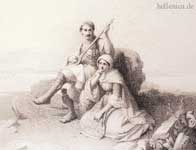
The Kiss, Lady in White, Lady with a Glove, The wife of the artist at the easel, Couple,

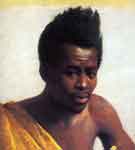
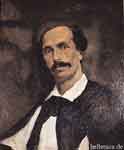

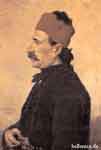
Burning of the Turkish Flagship, Christos the niger, Fighter, Young Woman, Iakovos Tompazis,




Portrait of Lysandros Kavtantzoglou, Girl, Interior of a house, Michail Soutzos,
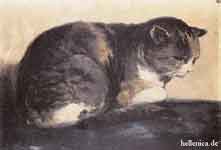


Mops the Cat, Return from the bazaar, Nude,


Alexandros Mourouzis, Hanging of Patriarch Gregory V of Constantinople,




Black Child, Carols, Lament in Psara, The Fellah Girl,



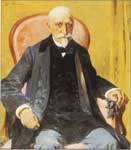

Self Portrait , Child smoking, Sailor smoking, Pavlos Kalligas, Iakovos Varoutis,



Child on the dock, Four studies, Illustration of greek proverb,


The Bad Grandson, After Piracy,
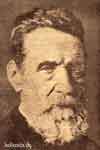

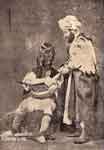
Nikiforos Lytras, Nikolaos Gyzis and Nikiforos Lytras, Lytras and Gyzis in oriental dress,
History
Nikiphoros Lytras, "The blowing up of the Nasuh Ali Pasha's flagship by Kanaris", 143x109 cm. Averoff
Nikiphoros Lytras was a child of a popular marble sculptor. In 1850 to the age of eighteen years he went to Athens to study in the School of Arts. He studied painting with Ludwing Thiersch and Raffaelo Ceccoli. With his graduation in 1856 he started teaching there the course of Elementary Writing. In 1836 with a Greek government’s scholarship he went to Munich to study in the Royal Academy Of Fine Arts. His teacher there was Karl von Piloty. In 1862 after King Otto was exiled the scholarship was no longer available to Lytra so the expenses undertook the ambassador of Greece in Vienna Simon Sinas. In the summer of 1865 before his return to Greece he meets Nicholaos Gysis in Munich. There they visited and studied a lot of art masterpieces. With his return in Athens Lytras became professor in the Athens School of Fine Arts in the department of Painting and he taught there for 38 years. In 1873 and for four years he travelled to Smyrna and Minor Asia, Munich and Egypt with Nicholaos Gysis. In 1879 he married Irene Kyriakidi daughter of a tradesman from Smyrna and they had six children.
His son Nicolaos Lytras followed in his footsteps by also studying at the Munich academy of Fine Arts and also heading the Athens School of Art. In later life he founded the 'Art Group', which many years later in 1919 exhibited in Paris, with participants including the engraver Demetrios Galanis, a friend of Derain, Braque and Picasso and a member of the French Academy. The nineteenth-century painters Ioannis Altamouras and Periklis Pantazis (both of whom died young) may be regarded as forerunners of this group.

Nikiphoros Lytras
Nikiphoros Lytras died at the age of 72 in 1904, after a short illness that is believed to have been caused by colours’ chemicals substances. After his death Georgios Jakobides took his place in Athens School of Fine Arts.
Art
Nikiphoros Lytras, Antigone in front of dead Polynikes (1865) Oil on canvas, 100 x 157 cm. National Gallery of Athens
During the period that Lytras was Piloty’s student he focused in History painting. His subjects were inspired from Greek Mythology and Greek history. After his return to Greece he started to paint portraits and every day life scenes. Lytra’s paintings about every day life correspond in the ideology of the ruling class of the times. His trips in Minor Asia and Egypt enriched his paintings with dark skinned children and other elements of Anatolia. The last period of his life he painted many scenes about aging, loneliness and the fear of death. Lytras was one of the most famous painters in Athens. He participated and honored in many exhibitions : in Zappeion’s exchibitions, in Paris (1855, 1867, 1878, 1889 and 1900) and in Vienna (1873). Also as he was the official portraitist in Athens and he painted many high class members of his times. His contribution in art was conceived also through his courses in the Athens School of Fine Arts. Even he was detached in the school of Academic Realism and stayed away from impressionists’ influences he marked Greek art history in his own way. In 1930 he was decorated with the Golden Cross of Savior. In 1909 – after his death- some of his paintings were presented in Piloty’s School (1885–1886) in Munich. In 1933 in Athens School of Fine Arts an exhibition with Lytra’s 186 paintings were presented.
Artist
A - B - C - D - E - F - G - H - I - J - K - L - M -
N - O - P - Q - R - S - T - U - V - W - X - Y - Z
| Ancient Greece
Science, Technology , Medicine , Warfare, , Biographies , Life , Cities/Places/Maps , Arts , Literature , Philosophy ,Olympics, Mythology , History , Images Medieval Greece / Byzantine Empire Science, Technology, Arts, , Warfare , Literature, Biographies, Icons, History Modern Greece Cities, Islands, Regions, Fauna/Flora ,Biographies , History , Warfare, Science/Technology, Literature, Music , Arts , Film/Actors , Sport , Fashion --- |
From Wikipedia, All text is available under the terms of the GNU Free Documentation License

